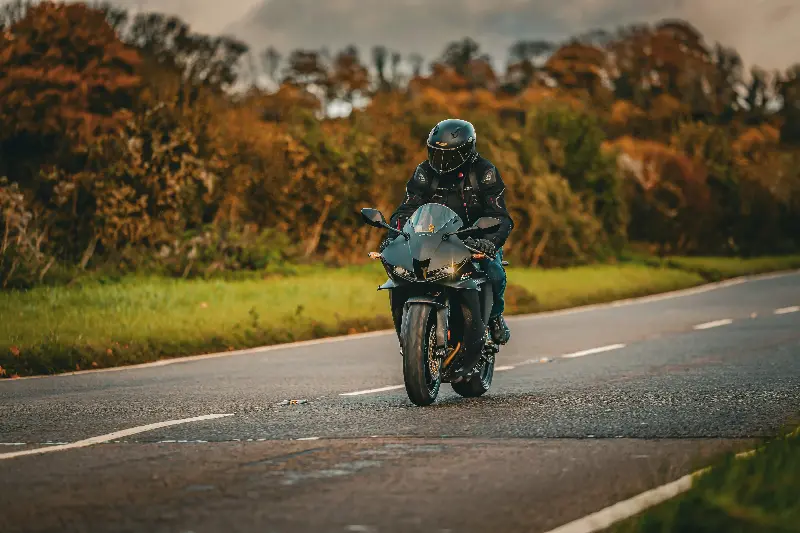
Curious about that unmistakable rumble of a high-performance motorcycle? Feel the urge to join the shifting crowd of adrenaline seekers who carve through the twisties on two wheels? If you're a rookie eyeing your first high-performance ride, you're about to enter an exhilarating world equal parts passion and precision. But before you grip those handlebars and let loose, there’s a roadmap to making your first choice a thrilling—and smart—one.
What Is Considered High-Performance for New Riders?
When the term “high-performance” comes up, images of sleek, race-inspired machines—crouched low and primed for speed—often jump to mind. But high-performance isn't just about peak horsepower or breakneck acceleration. For a new rider, it also means precise handling, strong brakes, lightweight chassis, and modern rider aids that elevate both control and confidence.
The truth is, first-time riders tend to overestimate what they need. In reality, many of today’s mid-sized sport bikes, naked bikes, and even advanced adventure motorcycles pack enough punch to thrill, without overwhelming a newcomer. Often, a bike between 300cc and 700cc, with careful consideration given to ergonomics and rider aids, is the sweet spot.
Skill Level: Honesty Is Your Best Friend
Maybe you’ve daydreamed about launching down a straightaway on a 1000cc superbike. But starting with a big machine could end up as an expensive—and dangerous—lesson. Motorcycles don’t have crumple zones, and high-performance versions amplify both your mistakes and your successes.
Choosing a manageable platform lets you grow your skills without biting off more than you can chew. Many pros and motorcycle coaches recommend starting with a sports-standard, such as a Yamaha MT-07, Kawasaki Ninja 400, or Honda CB500F. These bikes deliver plenty of power, genuine high-performance chassis behavior, and electronic safety nets, while still forgiving rookie lapses.
Modern beginner-friendly rides offer ABS, traction control, and even multiple power modes. These are no longer exclusive to elite bikes and can be lifesavers if your enthusiasm writes a check your skills can’t quite cash—yet.

Fitting the Bike to Your Body
You wouldn’t buy shoes without trying them on. The same goes—tenfold—for your first high-performance motorcycle. A bike that doesn’t fit won’t just be uncomfortable; it’ll sap your confidence and might even put you in risky situations, especially during slow-speed maneuvers or emergency stops.
Try to plant both feet on the ground at a stop. Adjust the reach to the handlebars and foot controls. If you’re on the shorter end, look for bikes with lower seat heights or accessible suspension settings. Manufacturers like Suzuki and Ducati now design some models specifically with adjustable components to welcome a wider variety of riders.
Weight matters almost as much as engine size. A super-literate engine in a heavy motorcycle may be harder to manage than a lighter, mid-power option. Balance, not brute power, brings the smiles—especially in city traffic or on unfamiliar, twisty roads.
Technology: Your Secret Weapon
Today’s motorcycles are equipped with technology that was unimaginable a decade ago. From smartphone integration and customizable digital displays to advanced rider-assist systems, these features radically improve safety and learning curves.
Look for bikes with adjustable riding modes—they allow you to start in a “rain” or “urban” mode that tames throttle response as you build skills, then dial up the excitement as confidence grows. Lean-sensitive ABS and traction control (now available even on some entry-level machines) can make all the difference if you hit a slippery patch mid-corner.
Electronic quick-shifters, while not essential for beginners, can add smoothness to shifting and keep your hands less busy. And don’t overlook the value of simple features like a gear position indicator, which can help ease the learning curve significantly.
The All-Important Test Ride
You wouldn't settle for a new phone or laptop without a hands-on demo. A test ride is a crucial part of picking your first high-performance motorcycle. Even if you know the stats by heart, there's no substitute for feeling the bike move under you, trying out the controls, and discovering its character.
Pay close attention to comfort, responsiveness, and your body’s position on the bike. Does it boost your confidence, or feel awkward and intimidating? Ask the dealer if they run demo days or have loan units. Don’t be shy—safety and enjoyment start with getting it right from the beginning.
Hidden Costs and Long-Term Considerations
The initial sticker price is only part of the equation. Factor in insurance—high-performance bikes can be pricier to cover, especially for younger riders. Maintenance costs (from tire wear to more frequent servicing), specialized gear, and accessories (like frame sliders or luggage) also add up.
Think about your long-term plans. Are you hoping to commute, take road trips, or hit a track day? Choosing a bike that can grow with your ambitions saves money—and hassle—when your beginner days are behind you.
Above all, remember that the right bike is the one that makes you want to ride every day, rain or shine.
From the intoxicating sound of a high-revving engine to the sense of freedom only two wheels provide, your first high-performance motorcycle is more than just a machine—it’s your gateway to adventure. Make your choice with your head and your heart, and get ready for the ride of your life. Safe travels, rookie rider.
